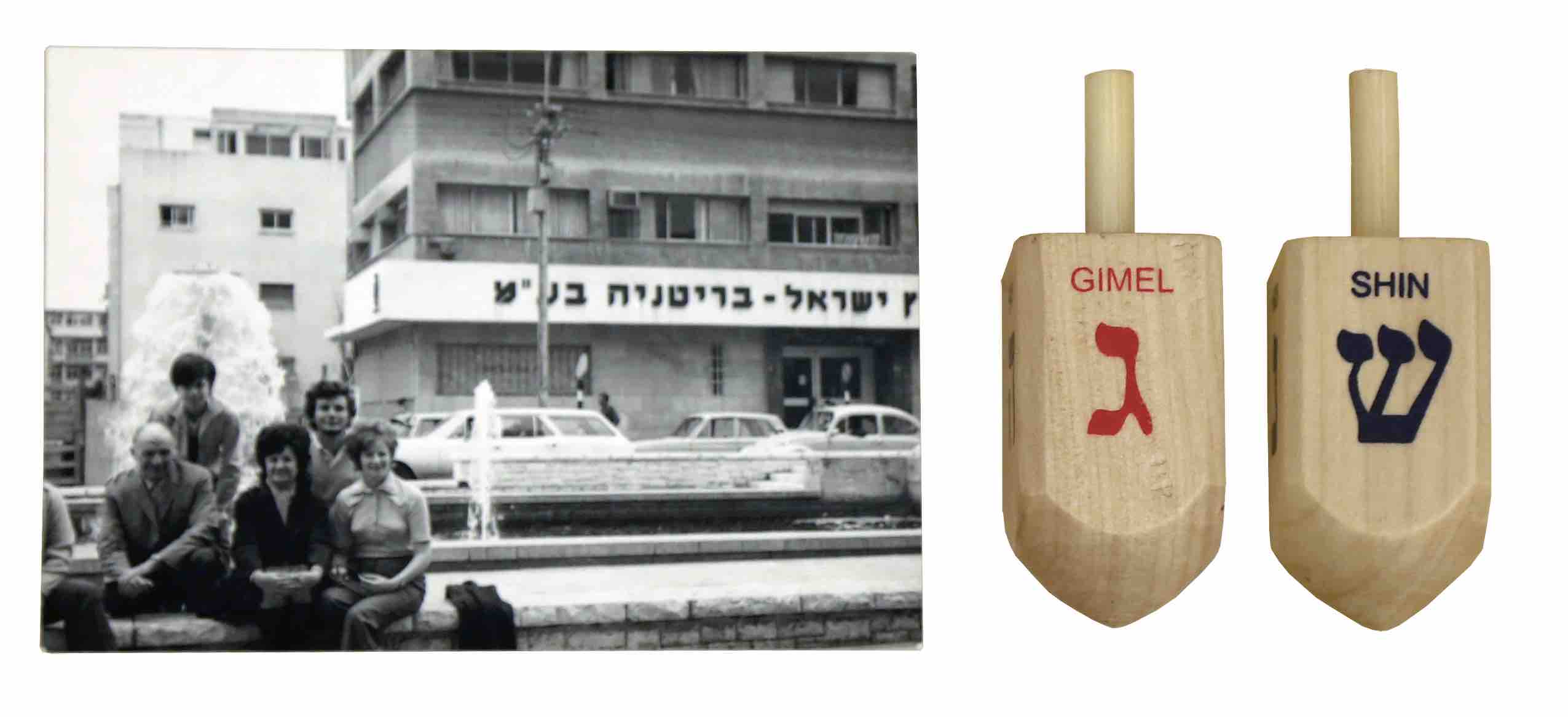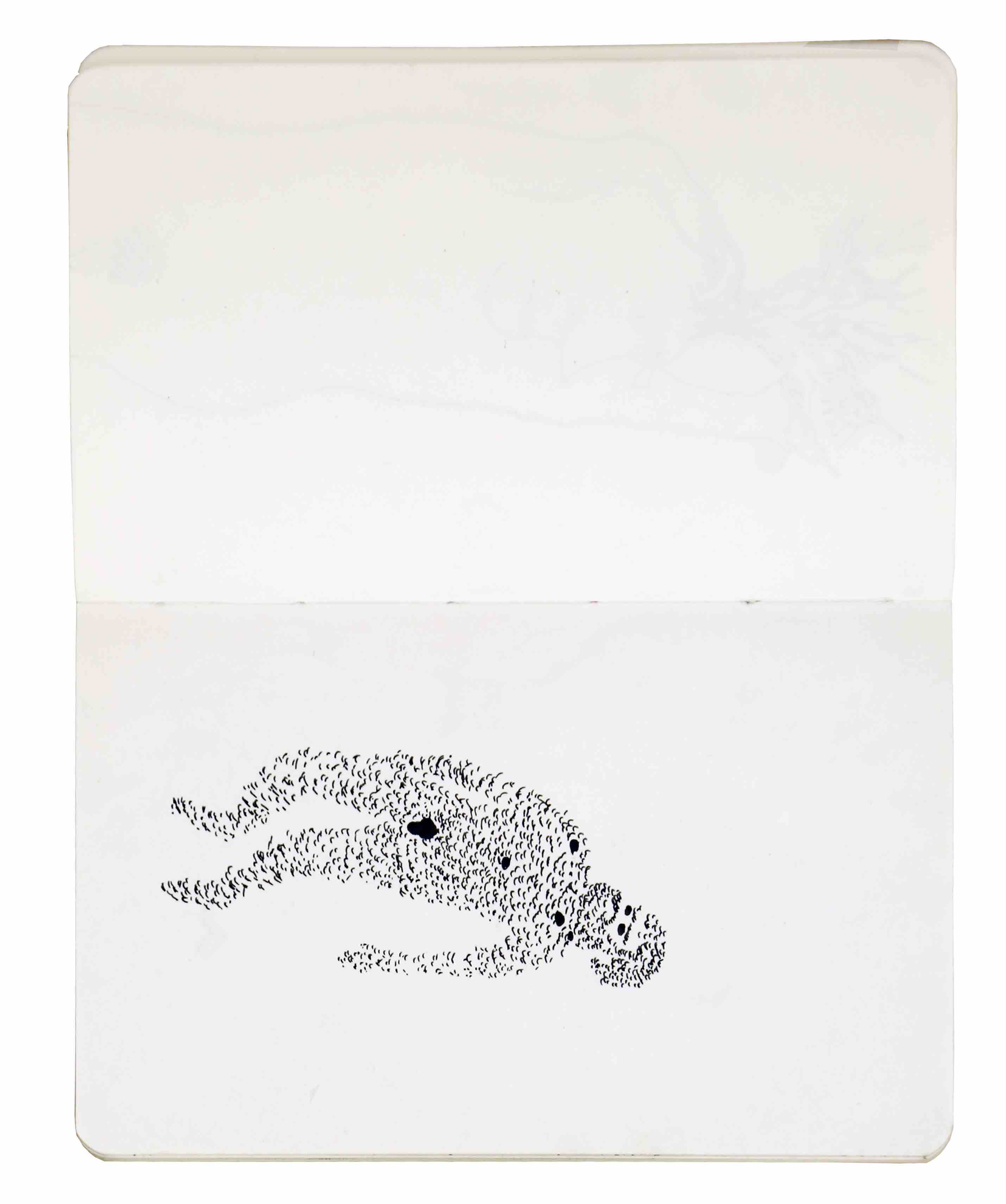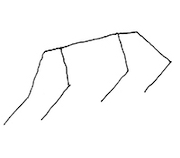V. La memoria como un gabinete de curiosidades
Es probable que todos aquellos que ya contamos con cierta cantidad de años hayamos dudado en alguna ocasión acerca de cuánto de algún atesorado recuerdo de la infancia proviene de nuestra experiencia directa y original, cuánto lo aprendimos de la versión de la historia que nuestros familiares se han encargado de contarnos cientos de veces y cuánto es producto de la reelaboración que nosotros mismos hemos realizado a través del tiempo. El hecho inquietante de que no tengamos una respuesta clara para ello toma otras dimensiones, pero se sostiene en los mismos mecanismos, cuando lo aplicamos a una cultura o una nación.

Creo que el asunto se hace visible en una escala particularmente sugerente en Recolecciones, el último trabajo con que se completa la muestra Sin tierra. Se trata de seis vitrinas dispuestas como una larga mesa en los que se yuxtaponen, de manera ordenada y casi equidistante, objetos de diversa índole: fotografías, cartas, postales, mapas, dibujos, piedras, adornos, documentos de identidad, libros, juegos, libretas de anotaciones y hasta emblemas políticos. Tienen en común el que todos son o podrían ser alguna clase de reliquia personal o familiar. Y por cierto que el orden relativo en que se ubican se corresponde a esa idea. Mientras en las vitrinas de izquierda se concentran los objetos que tienen que ver con la familia paterna del artista, a la derecha sucede lo propio con la familia materna, mientras al medio hay cierto equilibrio entre los objetos de una u otra rama entremezclados con los dibujos, croqueras y objetos recolectados por el propio artista durante el viaje.
Lo anterior no deja de ser un gesto significativo si tomamos en cuenta que el artista proviene de ancestros judíos desde su rama paterna, los Guendelman Sperling, y de ancestros palestinos desde su rama materna, los Hales Dib, que en ambos casos se habrían instalado en Chile hacia la Primera Guerra Mundial. Los primeros provienen del tronco cultural de los judíos askenazíes de Europa oriental, los Sperling desde la ciudad de Kishinev (actual Moldavia, ex Rumania) y los Guendelman desde Rusia. Respecto a estos últimos la tradición familiar cuenta un detalle interesante, pues el apellido original habría sido Dvorquez. Guendelman sería un apellido que habrían comprado en Alemania para emigrar a América. Los Hales (originalmente Halasah), por su parte, tienen origen en Madaba, una ciudad de mayoría cristiana que se ubica en la actual Jordania, pero que alguna vez formó parte del Mandato Británico de Palestina y luego del Emirato de Transjordania, que agrupaba las tierras delegadas a en principio a los británicos que se ubicaban más allá del río Jordán (Madaba se ubica a unos 20 km del mar Muerto). Y los Dib, originalmente apellidados Naffah, provienen de lo que hoy es la costa del norte de Israel, cerca del Líbano.

Los objetos de las vitrinas, al igual que incontables recuerdos que el artista debe haber recibido a lo largo de su vida, provienen en buena medida de ambas familias. Una foto o un pasaporte de los abuelos. Fotografías del servicio militar del padre, acompañado de fragmentos de una entrevista sobre este periodo. Accesorios que han pasado de mano en mano. Pero también se han agregado objetos que el propio artista encontró, compró o elaboró durante su estadía en Palestina, como caricaturas de sus cuadernos de notas o unas postales antiguas que perfectamente podrían haber pasado por recuerdos familiares. Pero además de todo esto, hay objetos que, con mayor o menor significado, no tendrían en principio una relación material con Israel, Palestina o cualquiera de las ramas familiares en cuestión, tal como un grupo de piedras en una de las vitrinas del centro.
En principio, podríamos acusar a Guendelman de romper cierto pacto con el espectador, que con cierta razón esperaría encontrar sus verdaderos recuerdos familiares y que de cada objeto hubiera una anécdota cientos de veces repetida, como las que antes referíamos. Pero lo que nos encontramos es una síntesis, en la que se articula la herencia, la selección, el capricho y el azar. Cada uno de estos objetos, antes de estar en estas vitrinas cumplió funciones y perteneció a contextos muy diferentes. Cada uno convoca a un mundo particular, pero todos juntos forman la ficción de herencia e identidad que articuló Guendelman Hales para esta muestra.
La memoria, de los individuos y los pueblos, funciona por mecanismos bastante semejantes. Combina tradiciones (que alguna vez no lo fueron), con invenciones voluntarias y algo de azar. Y con esos materiales, como si fuera una novela, se construye la misma memoria en la que buscamos las respuestas en torno a quiénes somos, a nuestra identidad. Que es también la misma memoria que nos liga a una tierra, a su pertenencia o a su falta, por la que podemos matar y morir.
V. Memory as a curiosity cabinet
It is very probable that all of us who are over a certain age have on some occasion had doubts on how much of some treasured childhood memory comes from our direct and original experience, how much of it has been learned from the version that our family members have committed to telling us hundreds of times, and how much is a product of the re-elaboration that we ourselves have constructed throughout time. The unsettling fact that there is no clear answer to this question takes on other dimensions, but holds true to the same mechanisms when we apply it to a culture or a nation.
I think that the matter becomes visible on a particularly suggestive scale in Recollections, the final piece that completes the No Land exhibition. It consists in six display cases set up as a long table in which several objects of diverse sorts are juxtaposed in an orderly and almost equidistant manner: photographs, letters, postcards, maps, drawings, rocks, ornaments, identity documentation, books, games, notebooks and even political emblems. What they have in common is that all of them are or could be some kind of personal or family heirloom. And certainly, the relative order in which they are displayed corresponds to this idea. Whilst the objects that have to do with the artist’s paternal family are concentrated in the display cases to the left, the same thing happens with the artist’s maternal family to the right. Meanwhile, the display cases in the middle hold a certain equilibrium between objects from either side of the family, intermingled with the drawings, notebooks, and objects collected by the artist himself during his travels.

The aforementioned display is a gesture of no minor significance, if we take into account that the artist descends from Jewish ancestors on his father’s side, the Guendelman Sperling family, and from Palestinian ancestors on his mother’s side, the Hales Dib family, both of which settled in Chile around the time of World War I. The father’s side of the family stems from the Ashkenazi Jews of Eastern Europe: the Sperlings from the city of Kishinev (currently Moldavia, formerly Rumania) and the Guendelmans from Russia. Regarding the latter, family tradition tells an interesting detail, for the family’s original name was Dvorquez, and Guendelman was a name that they bought in Germany in order to migrate to America. The Hales (originally Halasah), on the other hand, come from Madaba, a predominantly Christian city located in presents-day Jordan, but which once formed part of the British Mandate for Palestine and then part of the Emirate of Transjordan, which grouped territories originally delegated to the British that were located beyond the Jordan river (Madaba is located about 20 km away from the Dead Sea). And the Dibs, originally named Naffah, come from what is today the northern coast of Israel, close to Lebanon.
The objects in the display cases, just like the innumerable souvenirs that the artist must have received throughout his life, come largely from both families. A grandparent’s photograph or passport. Pictures of his father’s military service, accompanied by fragments of an interview regarding his experience. Accessories that have been handed down from generation to generation. But there are also objects that the artist himself found, bought, or elaborated during his stay in Palestine, such as the drawings in his notebooks or some old postcards that could have perfectly passed as family souvenirs. But in addition to all of this, there are objects that, with more or less meaning, have no material relationship with Israel, Palestine, or any of the family branches in question, such as a group of rocks that lies in one of the center display cases.
In principle, we could accuse Guendelman of breaking a certain pact with the spectator, who, with some reason, would expect to find his true family heirlooms, and for each object to have an anecdote that has been told hundreds of times, as mentioned before. But what we find is a synthesis, in which heritage, selection, whim and randomness are manifested. Each one of these objects, before resting within the display case, carried out functions and belonged to very different contexts. Each one summons a particular world, but all of them together form the fiction of heritage and identity that Guendelman Hales has articulated for this exhibition.

Memory, for both individuals and nations, works through fairly similar mechanisms. It combines traditions (that were not so at some point time) with voluntary inventions and a certain degree of chance. As if it were a novel, these materials are used to construct the same memory in which we search for responses regarding who we are, and answers regarding our identity. This is the same memory that ties us to one land, to its sense of belonging or its lack thereof, that we are capable of killing and dying for.

